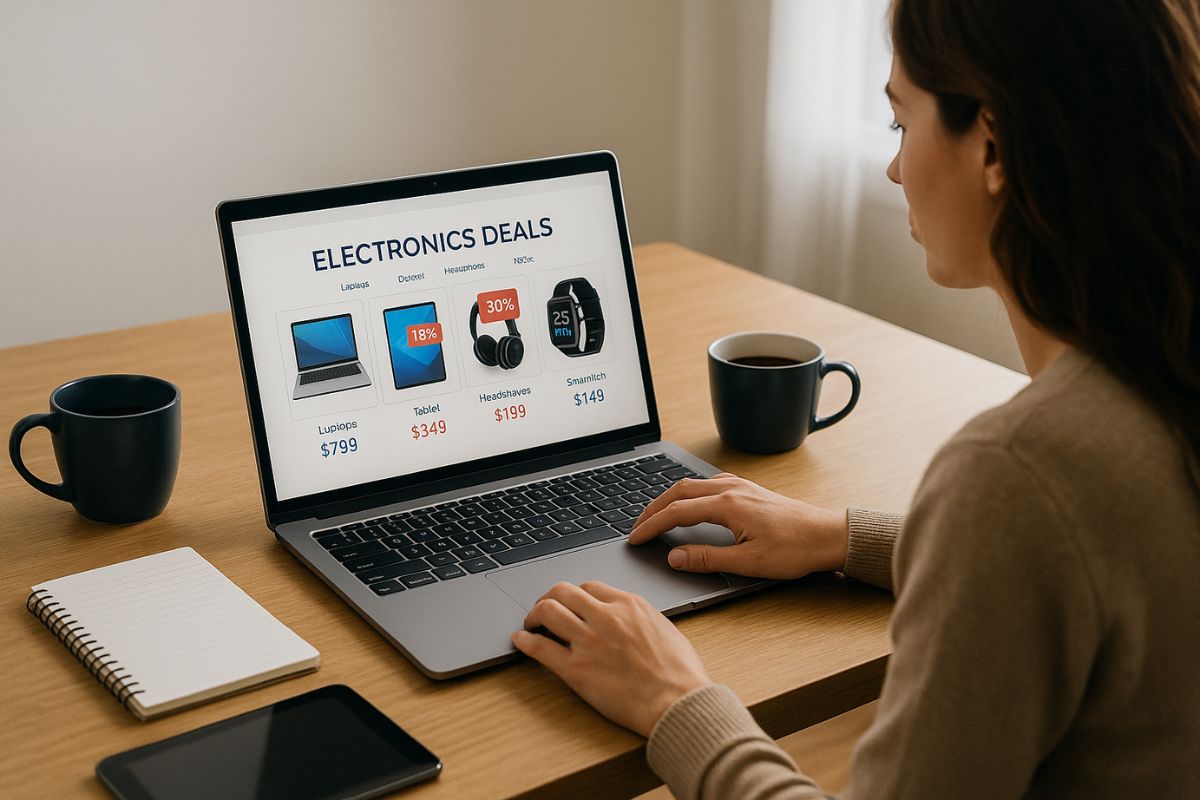Buying electronics doesn’t have to break the bank. Whether you’re shopping for a new laptop, headphones, or a smart home device, there are real ways to cut costs without cutting quality. The secret is knowing where and when to look—and how to shop smart.
Prices on electronics change fast. Retailers compete to win your clicks and dollars. If you’re willing to put in a little extra time and attention, you can score deals that feel like a win instead of a splurge.
What This Article Covers
This guide walks you through how to find the best deals on electronics. You’ll learn where to search, what tools to use, and how to avoid overpaying for things you don’t need. It also covers strategies for buying at the right time and how to spot legit discounts from fake ones.
Whether you’re buying your next gadget for work, school, or fun, these tips can help you stretch your money further and still get the tech you want.
Know What You’re Looking For
Before you even search for deals, narrow down what you need. The more specific you are, the easier it is to compare prices. Think about the features that matter most to you. Do you need a faster processor, more storage, or just something reliable?
Once you have a few brands or models in mind, keep a list. That way, when you come across a sale, you’ll know if it’s truly a deal or just a flashy price tag.
Doing a little homework ahead of time saves you from impulse buys. It also helps you feel good about your decision instead of second-guessing it later.
Use Price Tracking Tools
There are websites and browser extensions that track prices over time. Tools like Honey, CamelCamelCamel, and Keepa let you see how a product’s price has changed. This helps you avoid “fake” discounts that show a lower price based on an inflated original.
If a product goes on sale every few weeks, you might decide to wait for the next drop. If the current price is the lowest it’s been in months, you’ll know it’s worth grabbing.
Some tools even let you set alerts, so you get notified when a specific item hits your target price. That means less time checking and more time saving.
Look Beyond the Big Retailers
Amazon, Best Buy, and Walmart are great starting points, but don’t stop there. Many smaller or niche stores offer competitive prices, especially during off-peak times. Stores like B&H Photo, Newegg, Micro Center, or even direct manufacturer websites often run limited promotions.
Sometimes, these sites offer extra value too—like bundles, bonus accessories, or extended warranties. Always check if the deal includes things you’d normally have to buy separately.
Just make sure you’re buying from a trusted source. Look for customer reviews and secure payment options. If a deal feels sketchy, it probably is.
Stack Discounts When You Can
Saving money doesn’t always come from one place. You can often combine different types of discounts to lower your final price. That might mean using a store coupon, a cashback offer, and a rewards card all at once.
Cashback websites like Rakuten or TopCashback offer rebates on purchases from many popular stores. Credit card rewards or special retailer promotions can add even more value.
If you’re shopping online, check if there’s a discount code floating around. Sometimes just entering your email gets you a welcome coupon, which can make a difference at checkout.
Watch for Seasonal Sales
Timing matters. Electronics tend to go on sale during certain parts of the year. Think back-to-school season, Black Friday, Cyber Monday, or post-holiday clearance events. Prime Day and tax-free weekends can also bring major price cuts.
If you’re not in a rush, plan your purchase around these sales windows. It might mean waiting a few extra weeks, but the savings can be worth it.
Keep an eye on announcements from major retailers, and consider signing up for newsletters from brands you trust. They’ll often send alerts for early access or exclusive sales.
Buy Refurbished or Open-Box
Buying brand-new isn’t always necessary. Refurbished electronics can offer excellent value if they come from a reputable source. These items are usually tested, certified, and sometimes come with a limited warranty.
Retailers like Apple, Samsung, Dell, and Amazon all have official refurbished programs. You can also find good deals on open-box items—returns that are basically new but can’t be sold as sealed.
These products can cost significantly less without sacrificing quality. Just make sure you understand the return policy in case something doesn’t meet your expectations.
Check Local Deals and Trade-Ins
Local listings can be another way to save, especially for gently used items. Platforms like Facebook Marketplace or Craigslist may have what you need at a lower price. Just be cautious, meet in safe locations, and ask questions about the product’s condition.
Some retailers also offer trade-in programs. You can get credit for turning in an old phone, tablet, or laptop toward a new one. It’s a good way to lower your out-of-pocket cost while clearing out unused tech.
Even if the trade-in value isn’t huge, it still reduces waste and puts money back in your pocket.
Stay Patient and Think Long-Term
Not every good deal is a great fit. Buying something just because it’s cheap can lead to regret—or more spending later to replace it. Instead, focus on getting the best value for what you actually need.
If you wait until the right moment, compare carefully, and stack a few savings tools, you’ll often come out ahead. The key is having a plan and not letting pressure make the choice for you.
Finding deals on electronics takes a mix of patience, research, and timing. But when you put those pieces together, you can land quality gear without overspending. It’s not about chasing every sale—it’s about making smart purchases that support your goals and stretch your money further.
